The Ten Best Books About Food of 2021
From cookbooks to a memoir to a guide to hundreds of food adventures across the globe, these new titles will leave you satisfied
:focal(700x527:701x528)/https://tf-cmsv2-smithsonianmag-media.s3.amazonaws.com/filer_public/fb/cb/fbcbe9a6-d587-45ac-808c-a5457905928f/inarticle-food-books2021-1400w.jpg)
In this year of constant flux, food has been a wonderful comfort. The ability to come together once again with our extended friends and families, and share a meal across the table, is something we’ve undoubtedly been missing. It’s also a wonderful reminder of how food helps to ease tensions and unite us. Our 10 top books about food of 2021—a range of debut author cookbooks, explorations into cultural and culinary heritage, memoirs, and more—reflect this reunion of sorts. From the dishes of Central and West African descendants to a romp through some of the planet’s oddist culinary festivals and most unusual eats, get ready to dig in.
New Native Kitchen: Celebrating Modern Recipes of the American Indian
James Bitsoie is the former executive chef at Mitsitam Native Foods Café at the Smithsonian’s National Museum of the American Indian, as well as a member of the Navajo Nation. In his debut cookbook, Bitsoie—along with James Beard Award–winning author James O. Fraioli—presents a wide sampling of the flavors and culinary history of the nearly 600 American Indian tribes in the U.S., with 100 contemporary interpretations of Indigenous recipes such as cherrystone clam soup and rabbit stew with corn dumplings. Bitsoie details each recipe’s distinct tribal heritage, and even includes a glossary of hyperlocal foods found on Native lands: things like acorn meal, agave nectar and cedar berries. The book also points readers toward the Indigenous vendors who sell them. “As a Navajo,” writes Bitsoie, “it is imperative that I respect the myriad ingredients cultivated by Indigenous stewards of the land, air, and water in what we now call the United States.”
New Native Kitchen: Celebrating Modern Recipes of the American Indian
From Freddie Bitsoie, the former executive chef at Mitsitam Native Foods Café at the Smithsonian’s National Museum of the American Indian, and James Beard Award–winning author James O. Fraioli, New Native Kitchen is a celebration of Indigenous cuisine.
Gastro Obscura: A Food Adventurer’s Guide
Ever wondered what it’s like to sip beer crafted from the fog of Chile’s Atacama Desert, or how to attend Panama's illustrious Festival of the Cheese Curl? Then this is the book for you. “An ambitious, exciting, and zany anthology of heritage foodways,” writes Dan Barber, chef and author of The Third Plate, and he couldn’t be more spot-on. In fact, in this 448-page compilation, Atlas Obscura co-founder Dylan Thuras and co-author (and AO contributor) Cecily Wong pull together some of the most unique, interesting and incredible festivals, food and drink, and culinary obscurities from around the globe, transporting the reader into parts unknown—both edible and otherwise.
The book includes more than 500 entries, including photos, illustrations and adaptations of stories first published as part of its online magazine (including my own), along with tips on how to partake in everything from a seven-course pudding “extravaganza” in England to dining in a refurbished passenger jet just outside Ghana’s Kotoka International Airport.
Gastro Obscura: A Food Adventurer's Guide
Created by the ever-curious minds behind Atlas Obscura, this breathtaking guide transforms our sense of what people around the world eat and drink. Covering all seven continents, Gastro Obscura serves up a loaded plate of incredible ingredients, food adventures, and edible wonders.
County Fair: Nostalgic Blue Ribbon Recipes from America’s Small Towns
Author Liza Gershman is known for her eye-catching cookbooks, and County Fair is no exception. With a focus on recipes that have been awarded the Blue Ribbon, an award of excellence often given out at small town, county and state fairs, Gershman gathers dishes from all 50 states, as well as ample 4H and FFA livestock events. Close to 80 recipes in total highlight the types of foods that fill your stomach and make your heart light with nostalgia. We're talking items like orange lemon citrus bread, a Wisconsin State Fair winner, and triple chocolate rebel cookies, a recipe that won the Best of Show prize at the Illinois Sangamon County Fair. “I suppose I'm a bit old-fashioned,” writes Gershman, a Generation Xer, in the book’s intro, “one foot always in the time before tech and one foot embracing the modern day.” Through full-page color photos, a chapter on pantry stocking and even a brief history on fairs in the U.S., County Fair evokes a sense of small town Americana that we at Smithsonian are thoroughly smitten with, as evident by our annual round-up of Best Small Towns to Visit.
County Fair: Nostalgic Blue Ribbon Recipes from America’s Small Towns
Liza Gershman's book is a visual feast―it's jam-packed with the images, stories, and voices of the folk and tight-knit communities who celebrate this unique slice of Americana each year.
Black, White, and the Grey
In late 2014, business partners Mashama Bailey and John O. Morisano opened a restaurant in Savannah, Georgia, inside what had once been a once segregated Greyhound bus station. The Grey, as it’s called, quickly became one of the best new spots in the country, procuring accolades from the likes of Food & Wine, The New York Times and Esquire.
Part duel memoir, part cookbook and part history of both the restaurant and the larger issue of race relations in the South, Black, White, and the Grey tells a story of food, friendship, and healing. Bailey is a Black chef, Morisano a white entrepreneur, and what began as a working partnership between two people who didn’t really know each other morphed into a deep bond of acceptance and understanding. “[Black, White, and the Grey] is one of the best and most honest books about business, partnership, race, class, culture, and gender I've encountered,” writes Hunter Lewis, Editor-in-Chief of Food & Wine.
A recipe (many of which are Southern-style) from Bailey that is reminiscent of their friendship, compiled with easy-to-find ingredients, ends each chapter.
Black, White, and The Grey: The Story of an Unexpected Friendship and a Beloved Restaurant
A story about the trials and triumphs of a Black chef from Queens, New York, and a White media entrepreneur from Staten Island who built a relationship and a restaurant in the Deep South, hoping to bridge biases and get people talking about race, gender, class, and culture.
Bress ‘n’ Nyam: Gullah Geechee Recipes from a Sixth Generation Farmer
“It is common for many Black Americans to be cut off from their personal history—a potent device of the Atlantic slave trade,” writes The Philadelphia Inquirer reporter Tiffani Rozier. “This lack of history and ancestral connection has always triggered a quiet note of shame and frustration for me, but it’s also why a new book celebrating Gullah Geechee culture resonates so strongly.” Written by chef, farmer and James Beard Award semifinalist Matthew Raiford, together with Amy Paige Condon, Bress 'n' Nyam (a phrase that means “bless and eat” in Gullah, an English-based Creole language) honors the food of Raiford’s ancestral people, the Gullah Geechee, descendants of Central and West Africa who reside along the Atlantic coastal areas of the South.
In 2010, Raiford and his sister inherited the Georgia farm that his own great-great-great grandfather—a freed slave—purchased in 1874. His book tells the story of his family history in the greater context of the Gullah Geechee through dozens of photos and more than 100 heirloom recipes. They include dishes like cowpea salad, gullah rice, and a Lowcountry boil made with crab, shrimp and sausage, all which incorporate Gullah staple foods such as Carolina Gold rice and Sea Island red peas still grown in the region.
Bress 'n' Nyam: Gullah Geechee Recipes from a Sixth-Generation Farmer
More than 100 heirloom recipes from a dynamic chef and farmer working the lands of his great-great-great grandfather.
The Secret History of Food: Strange but True Stories About the Origins of Everything We Eat
In his debut book, food and culture writer Matt Siegel delves into the sometimes hard-earned history of how certain foods came to be, and waxes on topics such as the use of honey to preserve cadavers, and the belief that drinking animal milk actually makes you “act like an animal.” Penned in a tone that’s both irreverent and humorous, The Secret History of Food explores food from every angle—historical, cultural, scientific, sexual, and of course, culinary—and includes chapters centering on topics like corn, vanilla and “A History of Swallowing” (a personal favorite). The book’s exhaustive index, featuring everything from Scotchgard fabric protector to Cinnamon Toast Crunch cereal, shows that Siegel has undoubtedly done his research, and then some. “Little of the information is appetizing,” writes Kirkus Reviews about Siegel’s deep dive into food’s clandestine past, “but it is never dull.”
The Secret History of Food: Strange but True Stories About the Origins of Everything We Eat
An irreverent, surprising, and entirely entertaining look at the little-known history surrounding the foods we know and love
Provecho: 100 Vegan Mexican Recipes to Celebrate Culture and Community
It’s typical to think of carne asada tacos and tamales stuffed with chicken or pork when considering Mexican cuisine, but Edgar Castrejón is determined to change that. The first-generation Mexican American, who grew up in Oakland, California, studied plant science and horticulture with a minor in nutrition, and his debut cookbook honors traditional meat-heavy classics from Latin America while transforming them into healthier, vegan versions. “If no one told you it was vegan, you wouldn't even think twice!” writes Amazon reviewer Jessyca Dewey.
Many of the recipes are family favorites that had been passed down orally, and which Castrejón has finally gotten down on paper, though with plant-based tweaks. Provecho features 100 recipes broken up into chapters such as Antojitos (“Little Cravings”) and La Mesa Llena (“The Full Table”), with dishes like ceviche de coliflor (a cauliflower ceviche) and no-bake enchiladas with jackfruit. Most ingredients are easy to find, and many of the book’s recipes can be prepared in a half-an-hour or less.
Provecho: 100 Vegan Mexican Recipes to Celebrate Culture and Community [A Cookbook]
The definitive plant-based Mexican cookbook for a new generation, featuring 100 recipes transforming traditional dishes into vegan celebrations of family and home
Crying in H Mart: A Memoir
What began as a 2018 New Yorker essay by author Michelle Zauner—one about visiting the Korean supermarket H Mart following her mother’s death—is now a full-length memoir of the same name. Zauner is the Korean-American singer and guitarist of indie rock band Japanese Breakfast, who grew up in Eugene, Oregon. When Zauner was 25, her mother was diagnosed with pancreatic cancer. She died later that same year. Written with honesty and humor, Zauner’s memoir is as much about a complex relationship between mother and daughter that ended way too soon, as it is about food and identity and how the two intertwine. The book includes many relatable moments and photos of both Zauner and her family. But it’s what happens after her mother’s passing (which comes a little over midway through the book) that’s truly revealing. “In losing her mother and cooking to bring her back to life,” writes NPR book reviewer Kristen Martin, “Zauner became herself.”
Crying in H Mart: A Memoir
From the indie rockstar of Japanese Breakfast fame, and author of the viral 2018 New Yorker essay that shares the title of this book, an unflinching, powerful memoir about growing up Korean American, losing her mother, and forging her own identity.
Jew-ish: Reinvented Recipes from a Modern Mensch
“This is a rambunctiously uplifting book, vibrantly full of warmth, joy, and deliciousness,” writes food personality Nigella Lawson about Jew-ish: Reinvented Recipes from a Modern Mensch. Indeed, author Jack Cohen knows how to engage an audience. The former food staffer at Saveur and restaurant critic for Time Out New York is a social media personality, with legions of TikTok and Instagram followers who can’t get enough of his videos on baking garlic bread and challah braiding. In his first book, Cohen offers modern takes on traditional foods from his Jewish heritage that go well beyond matzo ball soup. The 272-page text is chock-full of updated recipes like roasted tomato brisket, sabich bagel sandwiches and matzo tiramisu, many of which incorporate ingredients inspired by his husband’s Persian-Iraqi heritage. Jew-ish even includes tips on hosting a Shabbat dinner party. It’s a great intro for those of us who didn’t grow up eating Jewish foods, and offers reimagined takes for the many who did.
Jew-Ish: A Cookbook: Reinvented Recipes from a Modern Mensch
When you think of Jewish food, a few classics come to mind: chicken soup with matzo balls, challah, maybe a babka if you’re feeling adventurous. But as food writer and nice Jewish boy Jake Cohen demonstrates in this stunning debut cookbook, Jewish food can be so much more.
Technically Food: Inside Silicon Valley’s Mission to Change What We Eat
Over the last several years, food products like Beyond Meat and Impossible Foods have taken over restaurant menus and are readily available in supermarkets. While the startups producing them intend to help address climate change and animal welfare, Technically Food’s author Larissa Zimberoff believes the financing and investors necessary to bring these products into fruition is a double-edged sword. “The current wave of food companies claims to be mission driven,” writes Zimberoff. “But they still want to make money.”
In this investigative study, Zimberoff provides a comprehensive and accessible take on these complex subjects while examining the future of our food. She hits home the truth that plant-based doesn’t mean minimally processed; in many cases, it’s far from it. Along with chapters on algae, fungi and pea protein, Zimberoff discusses everything from vertical farms to upcycled foods, and provides predictions from experts like entrepreneur (and plant-based investor) Mark Cuban and public health advocate Marion Nestle on the future of food. Technically Food also begs the question, What exactly are we eating?
Technically Food: Inside Silicon Valley’s Mission to Change What We Eat
As our food system leaps ahead to a sterilized lab of the future, we think we know more about our food than we ever did. But because so much is happening so rapidly, we actually know less about the food we are eating. Until now.
A Note to our Readers
Smithsonian magazine participates in affiliate link advertising programs. If you purchase an item through these links, we receive a commission.
/https://tf-cmsv2-smithsonianmag-media.s3.amazonaws.com/accounts/headshot/LauraKiniry.png)
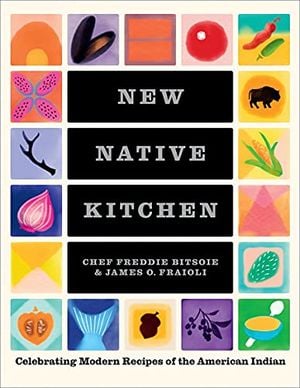
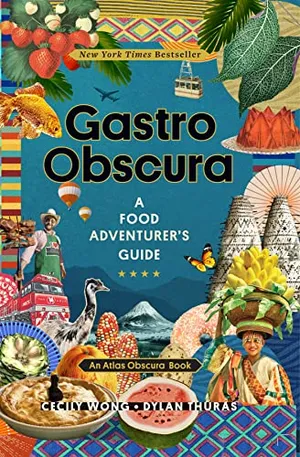

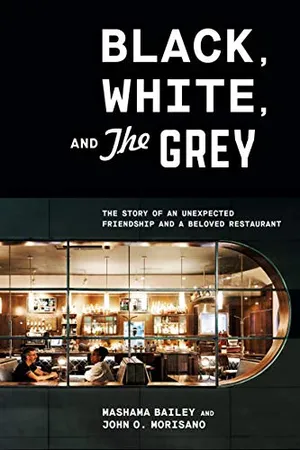
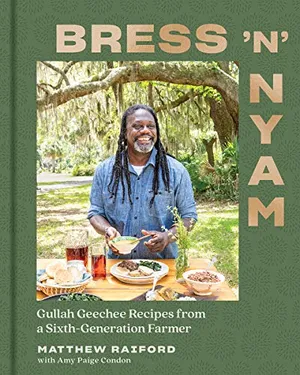
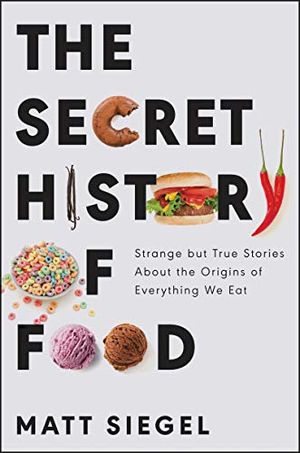
![Provecho: 100 Vegan Mexican Recipes to Celebrate Culture and Community [A Cookbook] Preview thumbnail for 'Provecho: 100 Vegan Mexican Recipes to Celebrate Culture and Community [A Cookbook]](https://th-thumbnailer.cdn-si-edu.com/T7KlKBNuSeOk1OEQfNumgQ1kqCE=/fit-in/300x0/https://tf-cmsv2-smithsonianmag-media.s3.amazonaws.com/amazon/amazon_image_7ee1f997c56fddaae854aa37a4479361a455f274.jpg)
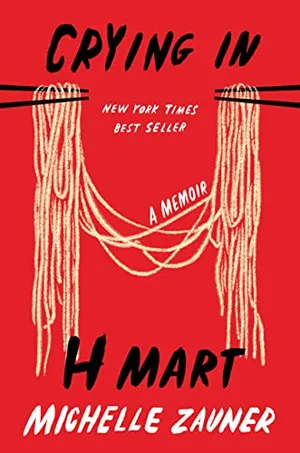
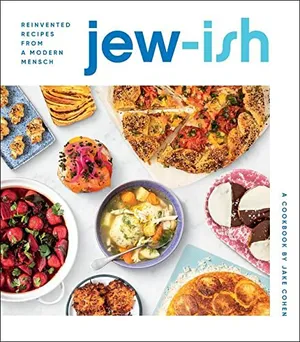
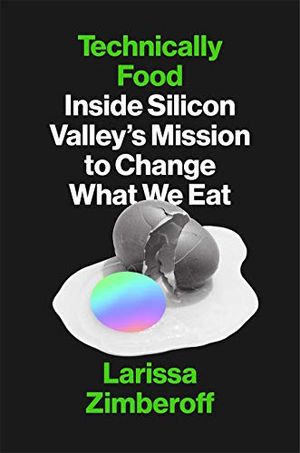
/https://tf-cmsv2-smithsonianmag-media.s3.amazonaws.com/accounts/headshot/LauraKiniry.png)